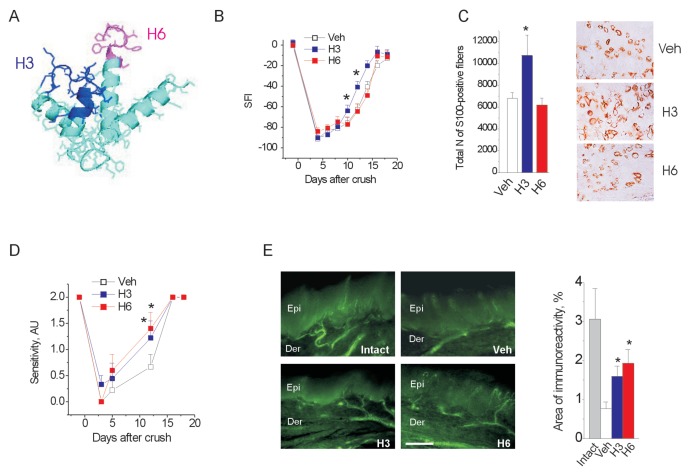Figure 1.
Peptide mimetics of S100A4 affect recovery after sciatic nerve crush in rats. (A) Neuritogenic motifs of S100A4 (H3 and H6) mapped on the three-dimensional structure of the protein (PDB: 1M31). (B, C) H3, but not H6, promotes restoration of an SFI after crush injury (B) and increases the number of S100-positive fibers in the regenerated sciatic nerve at 3 wks after crush (C). *p < 0.05 versus vehicle (Veh), one-way ANOVA. (A–E) Veh, H3 and H6 indicate the lesioned side of the vehicle-, H3-, and H6-treated groups, respectively. (D) S100A4 mimetics promote restoration of a sensory function after crush injury, as assessed by the pinprick test. A pinprick score was assigned from no response (0), reduced or inconsistent responses (1), to normal reaction (2). (E) S100A4 mimetics increase sensory reinnervation after crush injury to >50% of intact (unlesioned side of the vehicle-treated group). Left, fluorescent micrographs of regenerated sensory terminals in the plantar paw skin 21 d after crush, anti-PGP 9.5 immunostaining. Scale bar = 100 μm. Epi, epidermis; Der, dermis. Right, quantification of sensory innervation in the epidermis, *p < 0.05 versus Veh, one-way ANOVA. (A–E) Number of animals, n = 9/10/10 (Veh/H3/H6).

